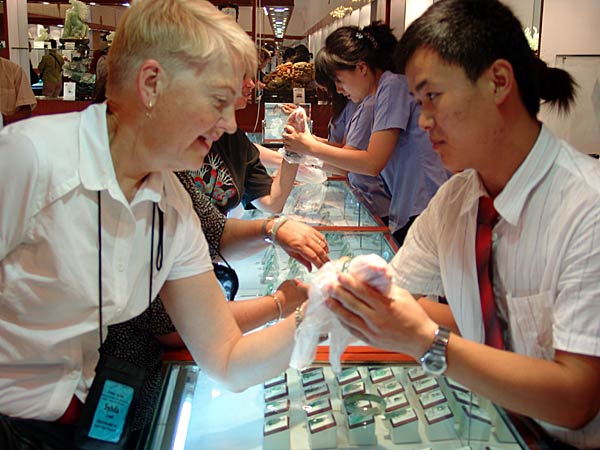
Beijing - Day 2
Today we head for the Great Wall and the Summer Palace, with a few other stops in between.

Our first stop was at a jade factory where we were given a talk on jade, its
characteristics and how quality is determined. Some of the women tried on jade
bracelets, as Sylvia is doing here. Of course they provided time for the women
to shop. Fortunately, jade earrings don't take up a lot of room in the suitcase.
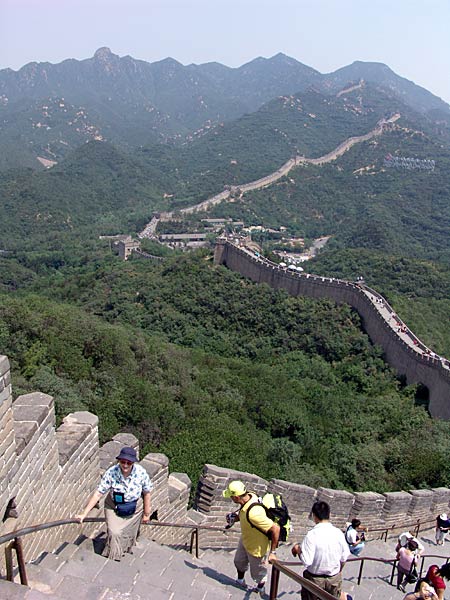
The next stop was the Great Wall, which was started in 221 BC by the emporer
Quin Shi Huang. The Great Wall spans 5,660 km from the Yalu river in the east to
the Gobi desert in the west. Most of the wall has seriously deteriorated, but
several sections have been restored. We visited the Badaling section north of
Beijing. Here, Nancy is making her way up the wall.
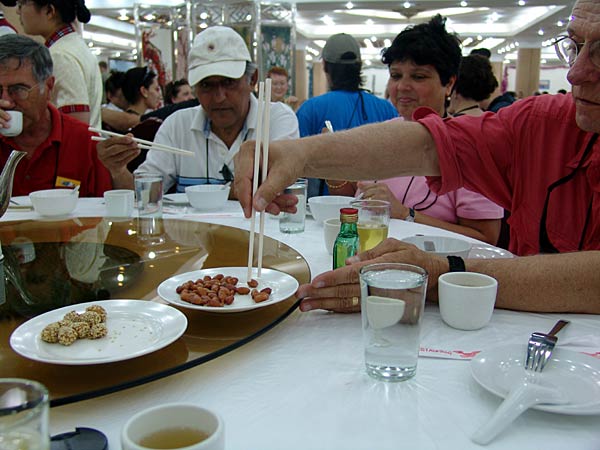
At lunch Vern showed his skill with the chopsticks by eating peanuts, while
Aleem and Shakila looked on dubiously; peanuts are small and oily, and therefore
not easy to pick up.
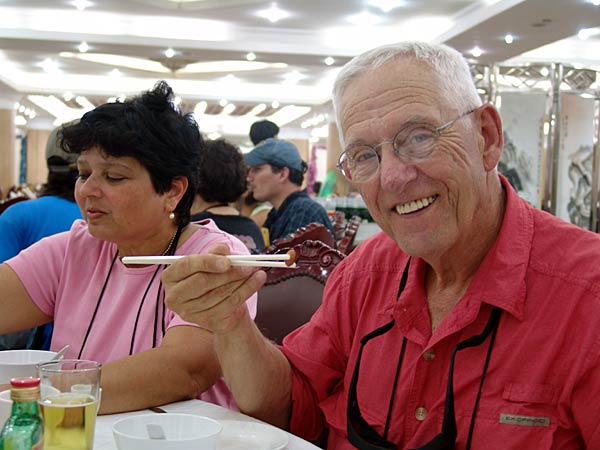
"See, nothing to it!"
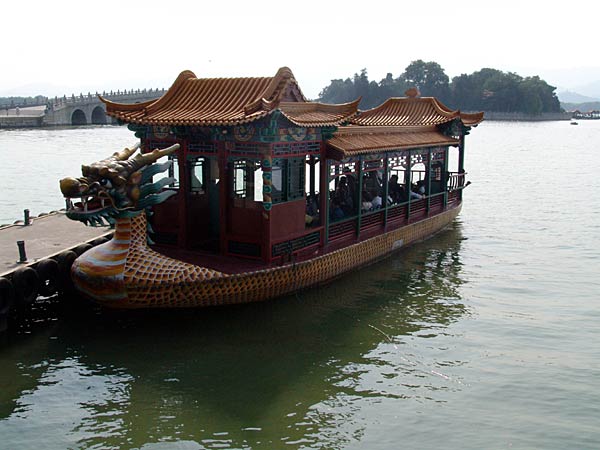
The main stop in the afternoon was the Summer Palace, where we had a ride in
this dragon boat on Kunming Lake. The Summer Palace, which is on the edge of
Beijing, was built by the emperor Zhenyuan in the year 1153 to escape from the
heat of the Imperial Palace. The lake is manmade.
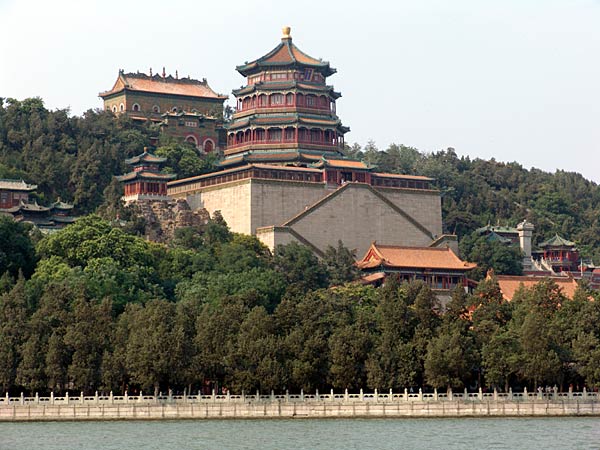
The dirt from digging Kunming Lake was piled on Longevity Hill, shown here.
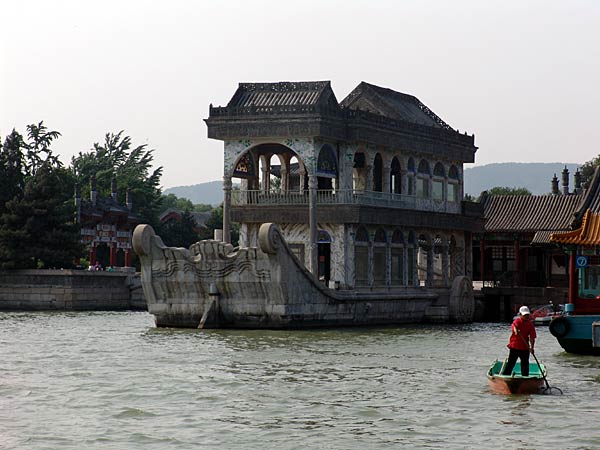
Our boat ride ended at the so-called Marble Boat; it was built by the empress
so she could have a nice place to enjoy the lake. The bottom part of the Marble
Boat are actually marble, but the upper level is wood painted to look like
marvel. It is also not really a boat, since it does not float.
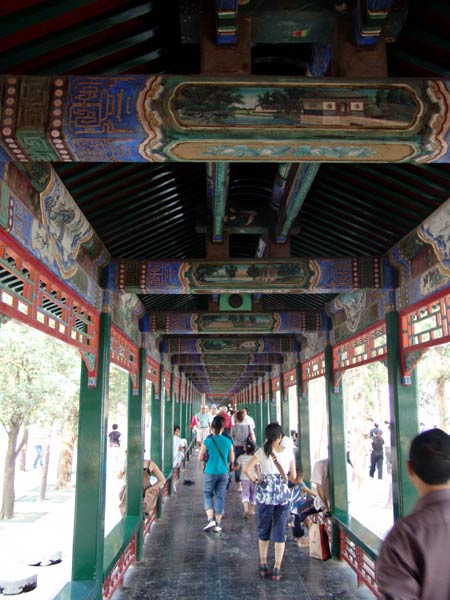
The Long Corridor starts at the Marble Boat and travels about 720 meters to
the East Gate. Each of the paintings on the beams are different; there are a
total of about 8,000 paintings, so one can consider the covered walk to be a
very long art gallery.
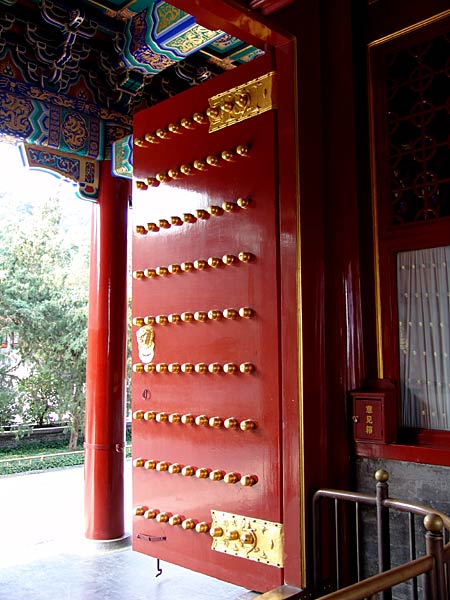
One of the doors at the East Gate. Note that there are nine rows of knobs, and each row contains nine knobs. The number "nine" was considered to denote longevity, and could only be used by the emperor in this way. We saw the same symbolic use of the number nine at the Imperial Palace and, on the next day, at the Temple of Heaven.

A closer view of the structures on Longevity Hill, this time from near
the East Gate.
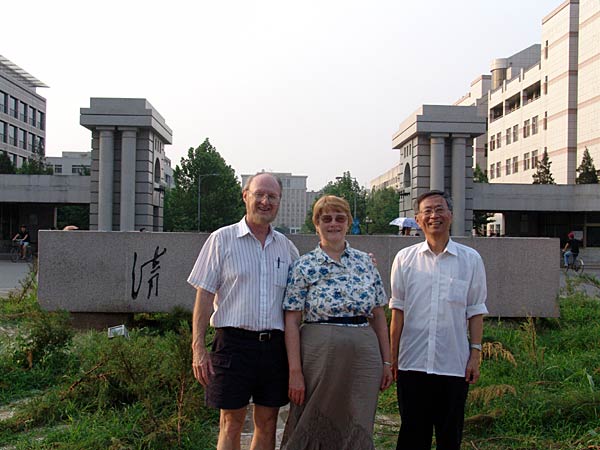
Waiting for Nancy and I at the East Gate was my former student, Li Xing Zhong
and his wife. They took us on a tour of Tsinghua University, where he is a
professor of modern physics.
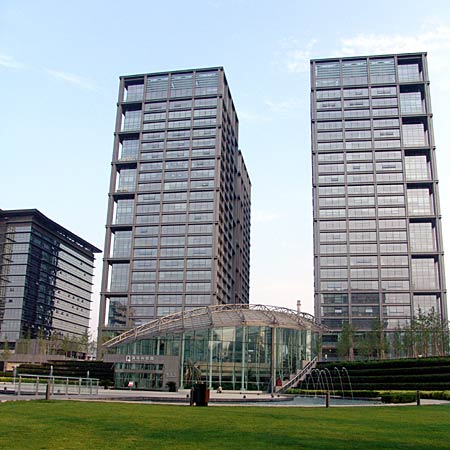
Some of the newer buildings in the Tsinghua University Science Park. The government seems to be putting a lot of money into newer technology areas and new facilities. It was very impressive!